Should I be doing CARDIO?!
Cardio is defined as any type of exercise that gets your heart rate up and keeps it up for a period of time.
It’s most people’s first port of call when they want to start improving their health & fitness.
But, you may wonder:
Should I be doing cardio?
If so, what type of cardio should I be doing?
Let’s dig in.
What are the benefits of cardio?
There are many benefits of cardiovascular exercise.
But I wanted to list a few of the main ones.
Improved blood circulation (arteries veins capillaries)
Improved mental health.
Stronger heart. (lower resting heart rate, stroke volume)
Better lung capacity.
Control Blood sugar.
Reduced likelihood of stroke, heart attack, some cancers and diabetes
Can also contribute towards weight management.
With so many important health benefits, cardio can and should play a role in healthy people’s lives.
But… What type of cardio is available to us and what are the pro’s and con’s of each?
3 Types of cardio
There is more than one way to perform cardiovascular exercise.
We’re going to consider 3 of the main styles of cardio:
Steady State
Steady state cardio is the first thing most people think of when you mention cardio.
This is performing continuous work at a steady / moderate intensity for extended periods of time.
It could be jogging on a treadmill, cross trainer or bike ride.
Steady state allows us to maintain an elevated heart rate for extended periods of time and improve our aerobic capacity and endurance.
Pro’s:
It’s simple, and doesn’t require much thought or planning
Con’s
It’s boring
Due to how repetitive it is, it can cause joint pain or injuries.
LISS - Low intensity steady state cardio.
This is a form of steady state Cardio, but it’s done at a lower heart rate.
It could be an activity as simple as walking.
A good guide to tell if your Heart Rate is low enough for the activity to be considered LISS is that you should be able to hold a conversation whilst performing the activity
Pro’s
Promotes recovery and doesn’t place additional stress on the body.
Low impact on the joints
Any fitness level can do it
Con’s
Time consuming
Doesn’t expose the body to adaptations available at higher intensities
HIIT - High intensity interval training.
Pro’s
Time effective (short workouts)
Continues to burn calories, post workout (EPOC)
Allows you to train at very high heart rates and train aspects of fitness that LISS doesn’t
Con’s
Most demanding, hardest to recover from.
It may be too advanced for some people.
Can be high impact, hard on the joints.
Should I be doing Cardio?
The first question I’d be asking as a coach is “why do you want to do cardio?”
Is it for some of the health benefits that cardio provides?
(Such as improving your mental health)
Or is primarily for weight loss / fat loss?
(which I believe is often the reason most people think to introduce cardio into their lives)
Cardio for Fat Loss
Cardio can be a useful tool to assist with achieving physique goals
But…
The challenge occurs when people ONLY do cardio for weight Loss.
In doing so… they miss out on all of the benefits of resistance training!
(Check out my article on 10 benefits of resistance training)
On the topic of improving how we look…
The most important benefit is that resistance training is actually superior for helping your body to prioritise fat loss
(so long as you’re also eating for that goal as well)
If your goal is to reduce body Fat…
You should absolutely be prioritising resistance training as your primary method of training.
… So where might cardio be helpful for those who are already resistance training?
We need to remember that…
Fat Loss can only be achieved by creating a calorie deficit.
A deficit of calories can be created in 2 ways:
Eating less
Moving more.
So… If you’re a person who is quite sedentary, it’s very hard for you to create a calorie deficit that you can sustain, by only limiting food intake.
You then risk under consuming calories which can lead to poor performance, tiredness and even nutrient deficiencies.
As a sedentary person… you should most likely focus on the ‘Moving More’ aspect of the calorie deficit.
In this case…
Introducing some Steady State, HIIT or LISS could now be a useful way to create the calorie deficit due to the increase in calories burnt through moving more.
In summary
Cardio has many health benefits.
I believe every human should be performing cardiovascular activities in their lives because of those benefits.
However, I definitely see an over-emphasis on cardio as a means to improve how we look.
My goal is to help educate people as to why Resistance Training as our primary training method when coupled with a Calorie Deficit is going to achieve the best possible results for our physique goals.
That being said…
If you are someone who leads a sedentary life, cardio may well be required to help you achieve your calorie deficit in a healthy and sustainable way.
Finally..
When choosing what type of cardio is best for you, consider:
the time you have available
your injury history
your ability to recover from the activity you chose.
Perform cardio in a way that is going to help you look, move and feel at your best!
